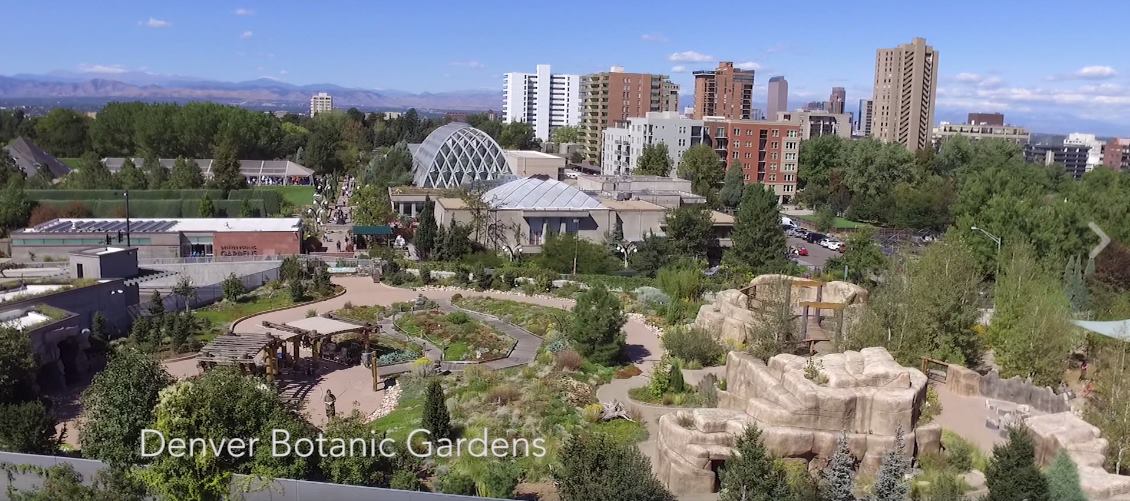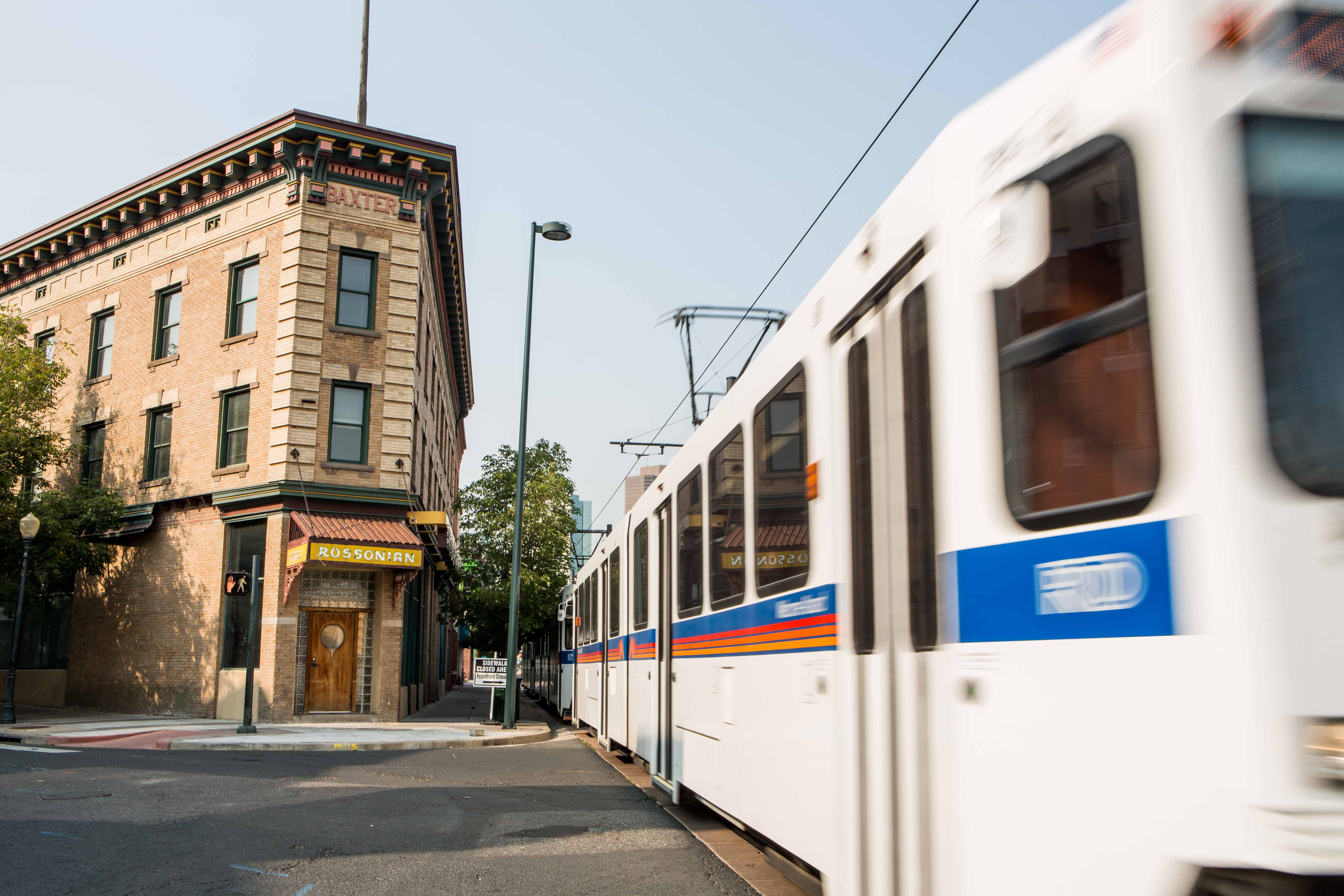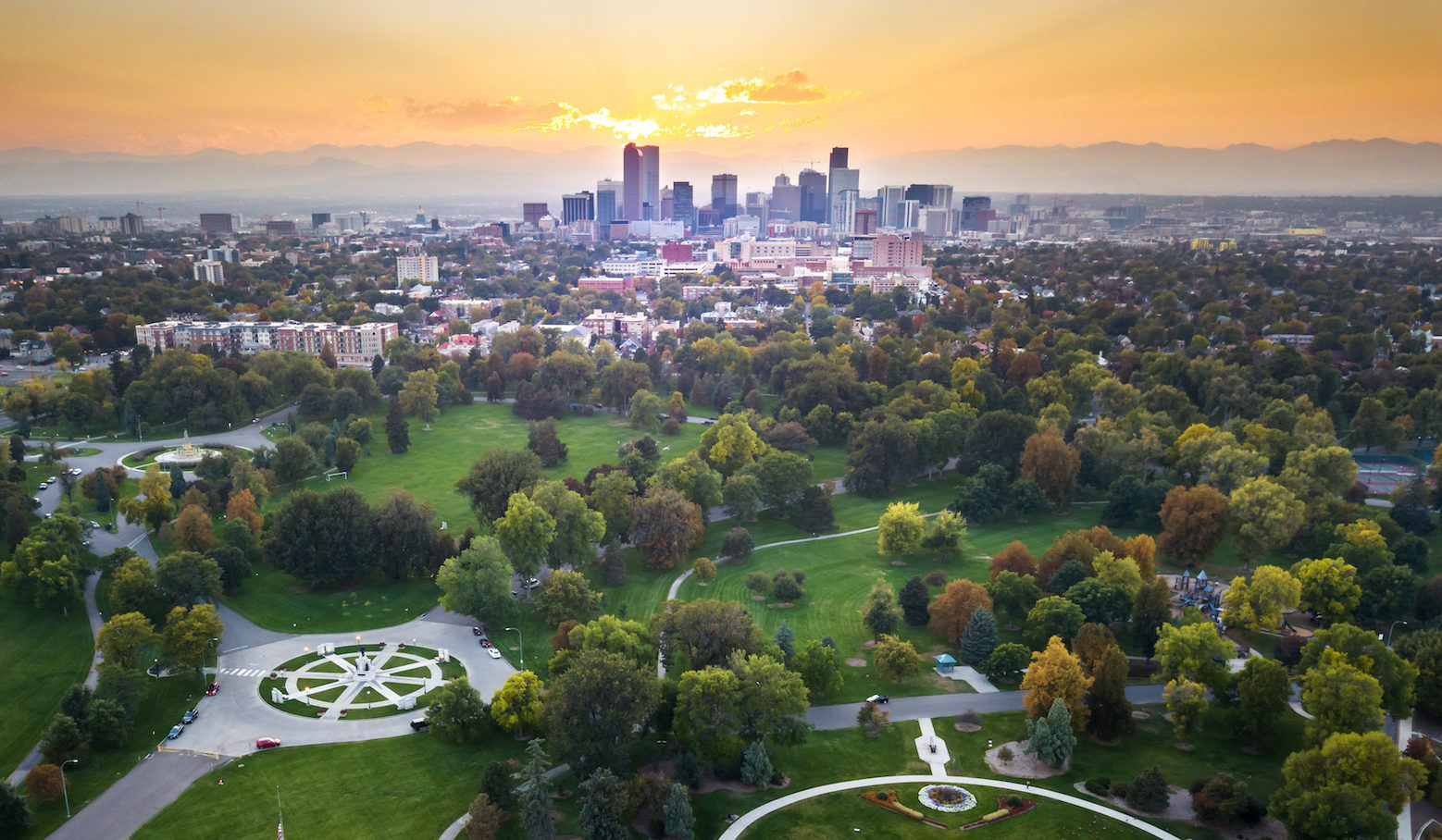With the recent weather patterns making even skeptical people think about climate change, it is an opportune time to create dialogue around the issues we can work to solve. That’s why last week, Mayor Hancock and city officials gathered for a panel discussion with the public about Denver’s Climate Action Plan. The sold-out event at The Alliance Center on Wednesday, January 17 proved that people care and want to know how to lead more sustainable lifestyles. City officials have been working on sustainability goals for many years now, including reducing emissions by 80 percent by 2050, fuel switching, 2020 sustainability goals, innovative public-private partnerships, benchmarking and increased transparency between the city and the public. Though the city must take decisive action and show leadership in these topics, the public needs to know how they can help on an individual level.
The four panelists at the event represented sectors of government that are currently working on sustainability goals. They were: Thomas Herrod, Climate and Policy Analyst; Katrina Managan, Energy Efficient Buildings Lead at Denver Department of Public Health and Environment; Crissy R. Fanganello, Director of Transportation and Mobility and Charlotte Pit, manager of Solid Waste Management at Denver Public Works.
Herrod explained about the panel event, “what I wanted to convey to the group is that Denver is taking a really active and leading role and we are really proud of our efforts. Since 2007 we’ve reduced community-wide emissions by almost 10 percent— that’s with population growth increase between 80 to 100,000 people. Tempering our excitement, however, we know we have a really big job in front of us to meet our 2050 goals. We are hoping to engage the community and get their support in helping us meet those.”
Denver’s Sustainability Goals
Denver’s 2020 Sustainability Goals, released in 2013, focus on improving air quality, climate change, energy, food, health, housing, land use, materials, mobility, workforce and water quantity and quality. The city provides progress reports on these goals periodically and has committed to even more calls to action in the last several years, such as hosting the Solar Decathlon last year and directing approximately $150 million toward affordable housing development and preservation. As Herrod mentioned, booming population growth in Denver adds another obstacle toward achieving the sustainability goals and should be taken into consideration when analyzing the city’s progress. The 2020 goals were implemented by Mayor Hancock after Denver achieved success in lowering greenhouse gas emissions by three percent in 2010 as a result of the first Climate Action Plan started in 2007. As 2020 loomed nearer, Denver looked further ahead and at loftier goals, especially in the area of air quality.
The 2050 goals were set out by Mayor Hancock in 2015 as a more aggressive way to address greenhouse gas emissions, aiming to lower them by 80 percent of baseline 2005 levels by 2050. As Herrod stated, emissions have been reduced by 10 percent in a decade which means there is still a lot of work to be done.
What is Being Done?

Lowering greenhouse gas emissions by 80 percent is a severe and necessary goal for Denver. One of the first things Denver has done is to find where the problems lie. Commercial and multi-family units in the city account for 57 percent of its emissions— a statistic discovered after years of collecting information on energy efficiency in buildings throughout Denver— which means the brunt of the responsibility to improve those conditions rests on the city and on apartment dwellers. Denver has been working to collect Energy Star scores for all of these buildings, as well as requiring buildings over 25,000 square feet to report their energy consumption to the city at their own expense in order to compare the findings with other cities and buildings (called benchmarking). These scores for Denver have just been published a few weeks ago, which means residents now have the ability to see what buildings are making the worst or best impact. Avoiding massive regulation on a government level, this kind of transparency in information allows consumers to choose how sustainable they want to make their lifestyles if they have the financial freedom to do so of course.
“Solving climate change can be a really big win for our economy,” Managan explained. “We estimate that improving the energy efficiency in Denver’s buildings—if we could see $340 million invested in improving it— we could see $1.3 billion in energy savings. That’s a really good return on investment. This is a win for the climate but also a big win for our economy. That’s the sweet spot we like to look for here in Denver.”
The city’s goal to improve emissions from commercial and multi-family units is to lower them 10 percent by 2020 using primarily energy efficient appliances, then double that percent each year following 2020. According to Herrod, decarbonizing our energy supply is one of the best ways to achieve the drastic results set out by the 2020 and 2050 sustainability goals. As of 2016, Denver’s energy supply came from coal (46 percent), natural gas (25 percent), wind (23 percent), hydroelectric (4 percent) and solar (2 percent). Last year it was officially announced that Xcel Energy would be partnering with a Danish wind turbine manufacturer (Vestas) to build a large wind farm in Eastern Colorado with enough energy to power 325,000 homes— a step in the right direction but not enough to remove fossil fuel from the picture entirely.
This last fall, Denver’s voters approved the Green Roof Initiative, an ordinance written by a citizen that will require new developments or additions on buildings 25,000 square feet or more to install a living (or “green”) rooftop garden that may also include solar panels. This kind of progress may be costly at first and was opposed by Mayor Hancock before its approval, but if it works as it promises, it will improve on several of Denver’s shortcomings— specifically the urban heat island effect that raises temperatures in Denver several degrees warmer than the surrounding regions. Knowing that over half of greenhouse gas emissions in Denver are from larger structures like commercial buildings and multi-family units, the Green Roof Initiative will ensure developers must design and construct with the future of climate issues like the urban heat island effect in mind. Though the city and Mayor’s Office of Sustainability set out many goals and promises toward curbing the impact of climate change, it is often independent action that is the most expedient.
How You Can Help

Living in a city can sometimes feel like you have little control over what happens, that only one person cannot make a difference. But as Herrod explained, it’s about starting with one change in your lifestyle— from walking your kids to school one day of the week to relying more on public transportation to researching solar opportunities that don’t require $20,000 or more to invest and construct. Making sure to use the resources the city offers for sustainable living—like the B-Cycle bicycle program and the RTD Light Rail—will ensure those programs stay in place and are affordable, accessible and reliable.
READ: A Mapped Guide on How to Experience Denver Via The RTD Light Rail
The panelists and the Mayor’s office want people to start using Energize Denver’s website with Energy Star ratings for buildings in Denver. Knowing the energy efficiency of your home or place of work is now easy to find out, and unless the demand for energy efficient buildings rises, the development of technology associated with that will not be affordable.
Denver residents especially need to look for more ways to reduce waste and increase recycling and compost. Last year a report was released citing Denver as “abysmal” at recycling, even compared to other cities along the Front Range. Apartments and commercial buildings are not required to recycle, leaving the responsibility to individuals who care enough to go an extra step. Visit this website to find where to recycle or compost just about anything in Denver or ask your landlord to chip in for the sake of the planet and provide a bin. Donations of furniture, clothing and other perfectly usable household items to local thrift stores and consignment shops are encouraged, rather than tossing them in the nearest dumpster or leaving them on the curb.
Contacting your state and local representatives about issues related to sustainability in Denver is vital and does not have to be cumbersome. Going to events like the Climate Action Panel is one way to participate if calling or emailing does not suit you. “The energy and enthusiasm expressed by those that attended the event were inspiring,” Mayor Hancock commented after the event. “It further reinforces the need and desire to take action on climate change on a local level. Residents can help us meet our ambitious climate action plan goals by increasing the energy efficiency of their homes or businesses and considering sustainable transportation like walking, biking, or taking public transportation. Electric vehicles are also a great option to consider.”
Finding the right resources for what can work in your life is the best advice given by the leaders of climate policy in Denver. If ‘knowledge is power,’ knowing the most you can about how to sustain Denver for yourself and future generations will give you a loaded arsenal to make a difference.
Department of Public Health and Environment – Climate Action Plan
Department of Public Health and Environment – Pass on Gas, Drive Electric
Energize Denver – Energy Efficiency Ratings
Denver Office of Strategic Partnerships
CDP – Environmental Impact Disclosure System
Denver Office of Sustainability
EPA Household Carbon Footprint Calculator
Sustainable Neighborhoods Program
Watch the video from the panel on Wednesday, January 17, 2018.





